How open are your doors?
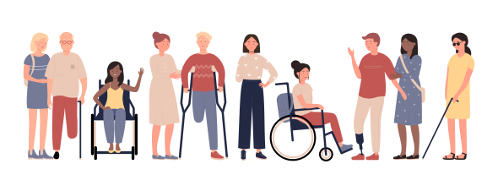
Whether you are a dry cleaner or run a laundromat, you want to welcome back your customers now that life is returning to normal. But how open are your doors?
More than 20% of all Canadians have a disability—many of them struggle physically every day to do things you may take for granted. Have you looked at your premises though the eyes of the physically challenged with an eye to making things easier for everyone?
Designed for everyone
In 2010, Canada ratified the United Nations Convention on the Rights of Persons with Disabilities (UNCRPD). Aside from having a very long name, the convention committed the Government of Canada to further the rights of people who have disabilities. In 2019, the Accessible Canada Act (ACA) came into force. The overarching goal of the ACA is to realize a barrier-free Canada by 2040. This is good for everyone.
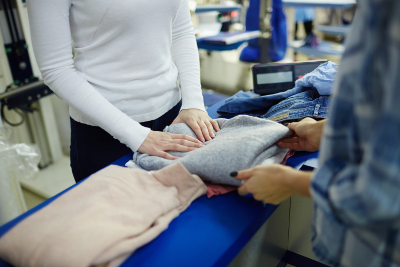
The seven priority areas for attention are employment; the built environment; information and communication technologies (ICT); communication other than ICT; the design and delivery of programs and services, the procurement of goods, services and facilities; and transportation.
The legislation established Accessibility Standards Canada (ASC) to develop national accessibility standards. Compliance with these is voluntary unless they are adopted into regulations.
But why wait for that?
As Brian Wallace, CEO of the Coin Laundry Association, said, “Making things accessible is not just the right thing do to; it’s good for business, too.”
Opening the doors wider
There are all kinds of ways you can make your plant, depot or laundromat more accessible, without rebuilding the whole place. It all starts with awareness.
If you’re tall, you may not notice that your front counter is perhaps uncomfortable for someone of short stature—and a complete barrier for someone in a wheelchair. Having one part of the counter that is lower solves this for everyone.
A cluttered lobby is difficult for everyone to maneuver through, whether burdened with an armful of garments, a laundry basket, or using a walker, cane or wheelchair. Step back and think about how much space you’ve allowed for customers to get in and out safely. The more open an area is, the more welcoming it can feel. You don’t have to get rid of everything, just move things to the perimeter of the area, or mount them on walls to get them out of the way.
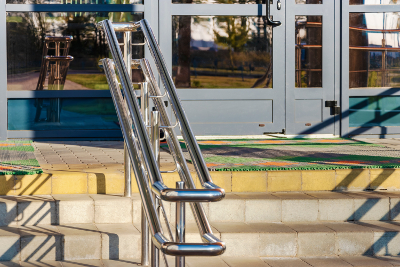
Do customers need to step up to get in? Some can’t do it. Are they confronted with a door that weighs almost as much as they do and is difficult to pull or push open? Believe it or not, people who deal with physical difficulties on an hourly basis will make patronage decisions based on how hard it is to do business with you. A sensor that opens doors automatically, a button that activates them, or a drive-through for easy pick-up and delivery are all most welcomed by those who need them.
In laundromats, are all the machines tall, with the dryers way across the floor making it hard to access controls, transfer loads or even use equipment for those who need help? If you’re putting in any new machines, consider an area where things are lower. Perhaps put in stacked dryers, since the bottom ones are, by definition, easier to reach.
If you can’t lower the equipment, can one section of machines have a raised platform in front of it (with a rail around it for safety, of course)? Can you make the labels on the controls bigger for those with vision impairment? Can you put in some lower folding tables for those who are seated or not as tall as other customers, for comfort?
Test drive your location
Don’t just stand in front of your location and say, “Hmmm. Looks OK to me.” Put it to the test! Better yet, get a couple of your staff members to do it, so you have buy-in for the changes and raise awareness.
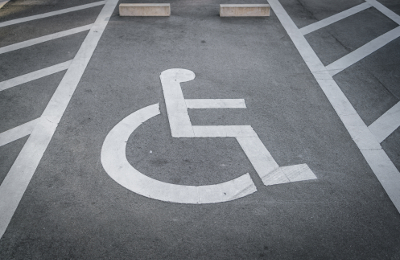
- Borrow a wheelchair, some crutches or a cane, and a walker. Give each to an employee (or use them yourself) for a few hours.
- Start outside. Drive up and get out, then use the chair, cane, crutches or walker. How difficult is it to negotiate the parking lot? (If you have a drive-through, good for you!) Then deal with the front door of the building. Can you get it open? With clothes in your arms/in a basket?
- Move around to the various places inside that a customer would go. Don’t leave out the restroom, if you have a public one. If you have waiting areas (in laundromats, for instance) are they wheelchair and walker friendly, or cluttered with furniture, with no place for people using assisting devices?
- Can you reach counters comfortably? Can you use equipment? Are you fighting just to get the chore done you’ve come in for?
“I was taught a long time ago that laundromats are one of the few retail spaces where people don’t come to shop, they come to work,” said Wallace. You’re charging your customers to use the equipment, so it is up to you to make that experience as pleasant, productive and easy as possible.
After you or staff members have tested out the location, sit down and discuss what you learned. Where were the sticky spots in the experience? What challenges can you reduce? How can you make your place famous for being accessible?
Have a vision exam
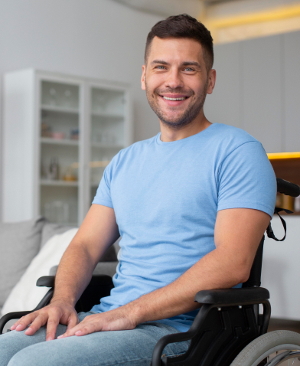
One thing that many physically disabled people comment on is how quickly they become invisible when they need to use equipment to get around. People aren’t sure how to react to them. Do you offer assistance the moment you see someone in a wheelchair? Is it impolite to address the fact that they are disabled? Sometimes, to avoid all that, able-bodied people just ignore those who aren’t.
You need to help your staff to SEE all the people they serve. They need to be sensitive both to what might be necessary to help someone, but also how to offer that help without being condescending. Any customer who comes in is entitled to equal treatment. Some need help—and will ask for it. Staff need to be ready at a moment’s notice to give whatever help they can.
In a laundromat, an attendant should be observant of the customers and ready to either assist or to guide them to equipment that might be easier to use, again, with polite suggestion. “Have you tried our new area with the raised platform? I find it makes the controls a lot easier to reach.”
Don’t overlook your staff

Part of the overall plan of the Accessible Canada Act is to be sure there are no inequities in workplaces, either. Make sure you are not short-changing any of your loyal employees who may have physical challenges, too. Bathrooms and break rooms should be equally open and navigable. Work stations should be patrolled for clutter that could either impede workers or cause accidents that lead to disability. Even your office should be able to welcome and accommodate any member of your team. That means a place that is at the top of a tall staircase may prevent some employees from ever coming up.
Having an accessible business means that it’s easier for everybody, and no one has to request special help to conduct normal business or do their job. You can—and should—make that happen.
HAVE YOU DONE THINGS TO MAKE YOUR BUSINESS MORE ACCESSIBLE?
We’d like to hear about it. Send a photo and a brief description of what you did, and how it was received by customers and/or employees to becca@fabricarecanada.com.






